Earth's Plant Life from Space in Photos: NASA Satellite Images
Herbal Earth: Western Hemisphere

The still image is a snapshot of the Earth created from a year’s worth of data from April 2012 to April 2013. Subtle differences in shades of green in this animation reflect vegetation conditions worldwide. High values of Normalized Difference Vegetation Index, or NDVI, represent dense green functioning vegetation, and low NDVI values represent sparse green vegetation or vegetation under stress from limiting conditions, such as drought. This image was released June 19, 2013.
Earth Vegetation
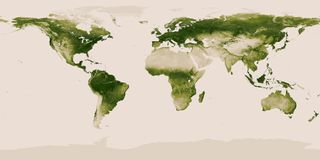
World map of vegetation created with Suomi NPP data
Herbal Earth: Nile Delta
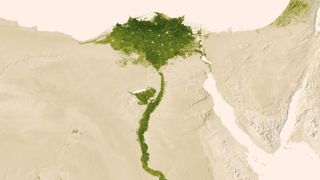
Urbanized areas of northern Egypt are visible amidst the deserts of Egypt. The image captured July 9-15, 2012 also shows the Nile River, which provides life-sustaining water to the region. The image was created from the Visible-Infrared Imager/Radiometer Suite (VIIRS) instrument aboard the Suomi National Polar-orbiting Partnership or Suomi NPP satellite, a partnership between NASA and the National Oceanic and Atmospheric Administration, or NOAA. This image was released June 19, 2013.
Herbal Earth: Eastern Hemisphere
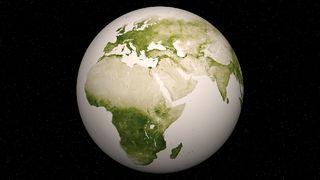
Subtle differences in shades of green in this animation reflect vegetation conditions worldwide. High values of Normalized Difference Vegetation Index, or NDVI, represent dense green functioning vegetation, and low NDVI values represent sparse green vegetation or vegetation under stress from limiting conditions, such as drought. The still image is a snapshot of the Earth created from a year’s worth of data from April 2012 to April 2013. This image was released June 19, 2013.
Herbal Earth
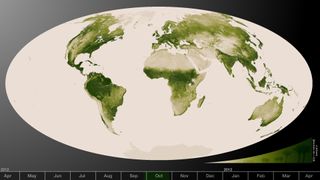
Subtle vegetation changes are visible in this year-long visualization. Large-scale patterns vary with seasons, but the local variations in green are also sensitive precipitation, drought and fire. High values of Normalized Difference Vegetation Index, or NDVI, represent dense green functioning vegetation and low NDVI values represent sparse green vegetation or vegetation under stress from limiting conditions, such as drought. This image was released June 19, 2013.
Herbal Earth: Florida Everglades
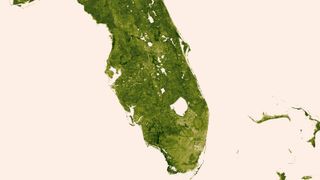
A "river of grass" extending south of Lake Okeechobee shows how the area was modified by man with visible areas of dense agriculture, urban sprawl and water conservation areas delineated by a series of waterways that crisscross Southern Florida. The image was created March 18-24, 2013 from the Visible-Infrared Imager/Radiometer Suite (VIIRS) instrument aboard the Suomi National Polar-orbiting Partnership or Suomi NPP satellite, a partnership between NASA and the National Oceanic and Atmospheric Administration, or NOAA. This image was released June 19, 2013.
NPP Climate and Weather Satellite

Artist's conception of NASA's NPP satellite in orbit. NPP — short for National polar-orbiting operational environmental satellite system Preparatory Project — is the first satellite designed to collect data for both short-term weather forecasting and long-term climate monitoring.
Get the Space.com Newsletter
Breaking space news, the latest updates on rocket launches, skywatching events and more!
Join our Space Forums to keep talking space on the latest missions, night sky and more! And if you have a news tip, correction or comment, let us know at: community@space.com.

Space.com is the premier source of space exploration, innovation and astronomy news, chronicling (and celebrating) humanity's ongoing expansion across the final frontier. Originally founded in 1999, Space.com is, and always has been, the passion of writers and editors who are space fans and also trained journalists. Our current news team consists of Editor-in-Chief Tariq Malik; Editor Hanneke Weitering, Senior Space Writer Mike Wall; Senior Writer Meghan Bartels; Senior Writer Chelsea Gohd, Senior Writer Tereza Pultarova and Staff Writer Alexander Cox, focusing on e-commerce. Senior Producer Steve Spaleta oversees our space videos, with Diana Whitcroft as our Social Media Editor.
Most Popular

